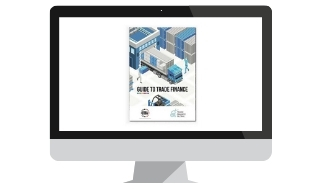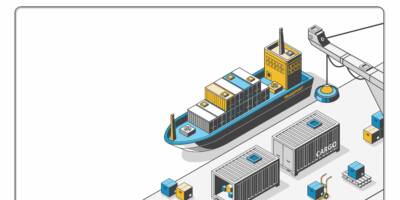Differentiating between an IGM (Import General Manifest) and a Bill of Entry can be tricky. The following questions, most of which deal with imports, can help us to identify the differences between these two documents:
- How does an IGM work in imports?
- How does a Bill of Entry work in imports?
What is an IGM?
An IGM is a legal document that is completed by the carrier of the goods at the destination customs location. It contains the details of any goods arriving at that destination.
What is a Bill of Entry?
A Bill of Entry is the legal document that is completed by an importer, or alternatively, by his customs house agent. The main reason to fill out this document is to pass import customs clearance procedures in order to receive a delivery of any imported cargo.
What’s the difference?
Now that it is clear what these two documents are, we need to differentiate them by looking at how they work in imports.
How does an IGM work in imports?
An IGM is a document that is prepared by the carrier of the goods with the relevant customs department. The document must contain all the details of the goods arriving at the customs destination.
There is no way you can evade completing this document because it is a compulsory requirement when goods arrive at a destination. Each country’s government insists that carriers fill out the Import General Manifest once imports reach the customs location.
The details contained in the Import General Manifest include:
- IGM number
- Line number
- Importer’s name
- Importer’s address
- Description of goods
- Port of loading
- Various other details of the goods
Each bill of lading/airway bill that contains details regarding the imports is shown under each line, where there is a serial number that must be indicated in the Import General Manifest. Once completed, the importer must file the necessary Bill of Entry based on the Import General Manifest. This is to ensure that the carrier completes imports customs clearance procedures and formalities.
After that, the details are manually entered into the system, since electronic filling machines are not used at customs locations. Instead, you will find a customs agent filling in the details and ensuring that they capture every piece of information required for the IGM.
Note that if there are any mistakes found when completing the Import General Manifest, the import customs location will not accept the clearance documents. The Import Customs Clearance document details must match all the details in the Import General Manifest.
What is a Bill of Entry in imports?
We have already explained what a Bill of Entry is above. Now, our aim is to explain how it works in Import Customs Clearance.
A Bill of Entry is a legal document filled out by an importer or his customs broker with the relevant customs department. The only way to take the goods out of customs is to ensure that the Bill of Entry prepared by the carrier meets all the necessary import customs clearance formalities.
Once the customs officials of each country approve the goods, they become passable to the next destination, which is the importer’s intended location.
The Bill of Entry includes:
- Port code
- License number
- Customs house agent code
- IEC (Import Export code)
- Importer’s name
- Importer’s address
Note that if the importer is a registered taxpayer, the address will be auto-populated. At the end of the document, there are two signature and declaration sections. One is for the importer, and the other is for the customs house agent.
If the importer fails to file the Bill of Entry within the stipulated timeframe of 30 days within the arrival of goods at a customs location, such goods can be subjected to auctioning by the authorities. This happens when the importer fails to respond to customs and other related authorities concerning such auction.
To prevent an auction of their goods, the importer can request more time from the customs authorities by asking them to extend the date of filling for the Bill of Entry. However, even such a request must be made within 30 days of the arrival of goods at the custom destination’s port. In some special circumstances, customs authorities can permit importers or their customs broker to file the Bill of Entry after 30 days have passed since the goods arrived.
Get in touch with our Freight Forwarding networking team here.
Latest insights for importers
Bills of Entry were needed to assist for the arrival of goods which were being imported from Australia to the Port of Mumbai within the requested time period.

Case Study
TFG put us in touch with BOE specialists based locally so that we could continue working on our trade flows for grains and soft commodities with our partners and grow the business on both the import and export side.
Freight Forwarding Hub
1 | Introduction to Freight Forwarding
2 | Air Freight
3 | Bill of Lading (BL)
4 | Container Shipping
5 | Demurrage
6 | Import General Manifest (IGM) and a Bill of Entry
7 | Full Container Loads vs Less than Container Loads
8 | Inbound Logistics
9 | Container Freight Stations
10 | Container Yards (CY)
11 | Ocean Freight
12 | Reefer Containers
13 | Telex Releases
14 | IGST, SGST and CGST
15 | Marine Insurance
16 | DSV Tracking
17 | Port and Starboard
18 | Air Cargo Manifest
19 | Shipping Management Software
 Australia
Australia Hong Kong
Hong Kong Japan
Japan Singapore
Singapore United Arab Emirates
United Arab Emirates United States
United States France
France Germany
Germany Ireland
Ireland Netherlands
Netherlands United Kingdom
United Kingdom



















